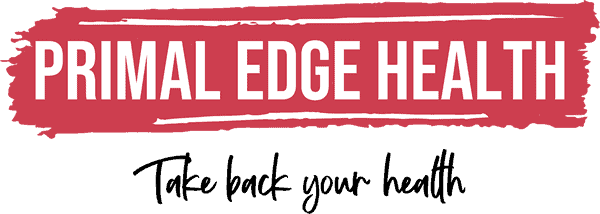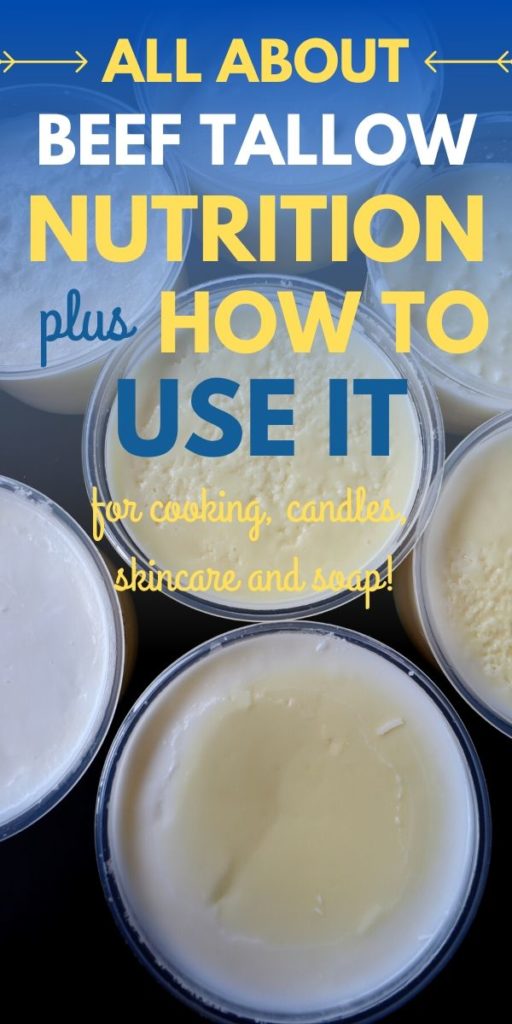Beef tallow is an important fat that you should be cooking with, making at home, and even slathering on your skin! There are numerous benefits to using this heritage fat. Besides just tasting good, tallow can support our internal systems and nourish our external shell – the skin! Not to mention, animal fats can be sustainably produced and respectfully use important parts of the animal that would otherwise go to waste.
Are you reading between the lines in that last sentence? Tallow is affordable! It is a great dairy-free fat to render yourself and also budget-friendly to buy ready made from a local store or online. Go ahead and learn a bit more about this incredible fat and how you can use it on a low-carb, keto, or carnivore lifestyle.
Table of Contents (click to view)
What is Beef Tallow?
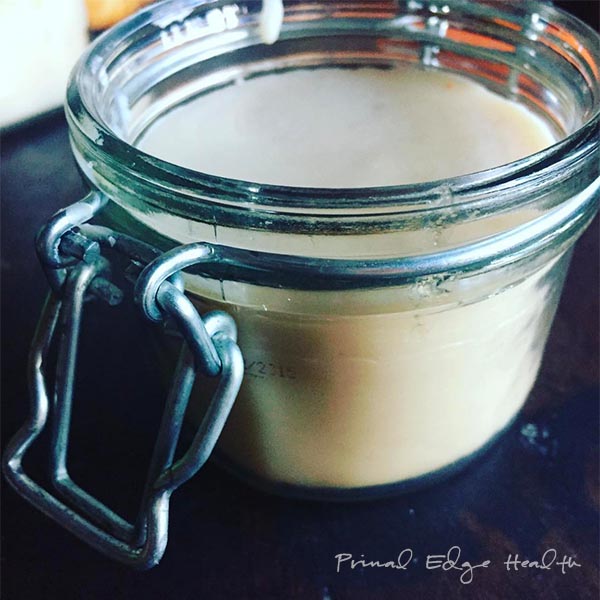
Tallow is a rendered form of fat from ruminant animals. One can derive tallow from beef, lamb and mutton, goat, and bison. Naturally, beef tallow is rendered fat from beef.
This hard waxy fat can range from cream-colored to deep yellow and is solid at room temperature. Similar to butter, various factors like age and diet can affect the color of the fat.
Tallow is an excellent food for long-term storage, so add a few jars to your stash of emergency keto foods. If stored in a sealed container, tallow will keep for extended periods of time without the need for refrigeration. Pure tallow does not spoil.
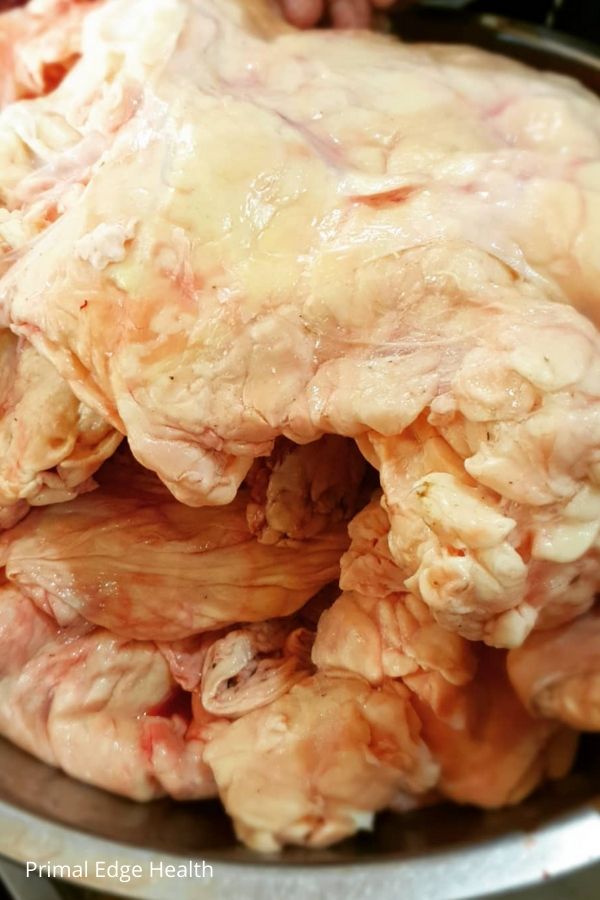
Tallow vs Suet
While tallow and suet are similar, they are not the same. Suet is the fat that surrounds the kidneys and goes down the groin.
The size and color of raw suet will vary. Beef suet tends to be compact and thick. It ranges from white to off-white to yellow. Dairy cows like Jerseys and Guernseys have bright yellow fat.
Eat suet raw, lightly fried, or render it into tallow.
Suet goes in the pot. Liquid tallow and the remaining bits, called cracklings, come out of the pot.
Tallow vs Lard
Some people mistake tallow and lard as the same food. However, the two meanings are similar (both rendered animal fat) yet different (coming from separate animals).
Tallow refers to rendered fat from beef suet.
Lard refers to rendered fat from pork.
The Prairie Homestead has a great tutorial on How to Render Lard at home.
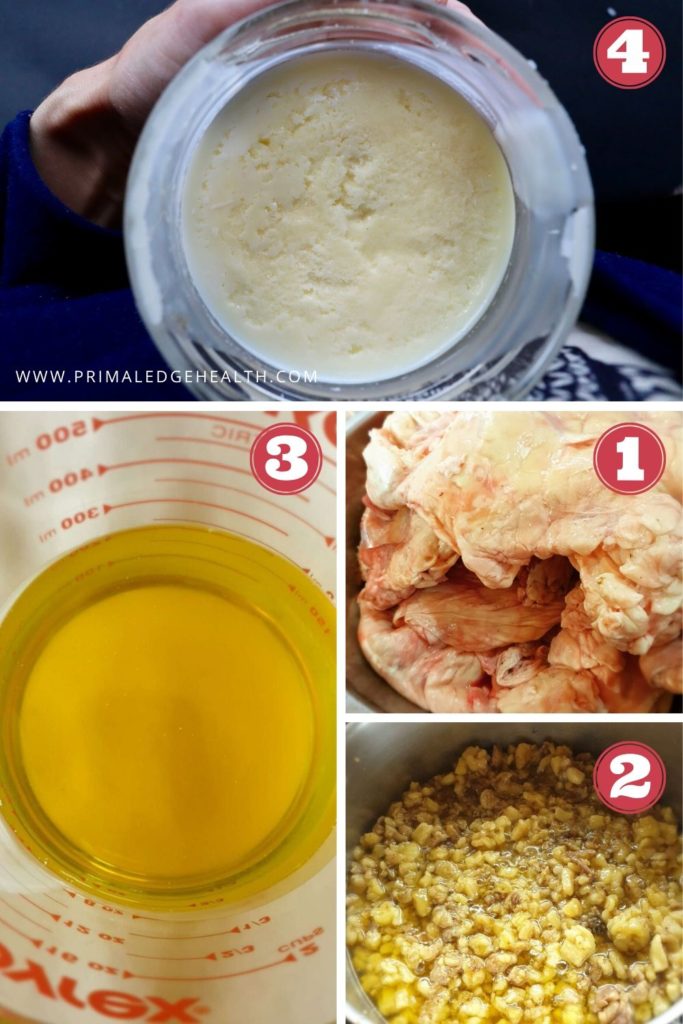
How to Make Beef Tallow
Learning how to render beef tallow from suet at home is a simple process with minimal steps.
There are a few ways to go about it but I recommend the dry method, without water. Once you get the hang of it, try making mutton tallow, lamb tallow, and bison tallow to compare to beef tallow and see which one is your favorite.
You may notice a thick layer of fat settle over your homemade bone broth after it cools in the refrigerator. This is also tallow. You can separate it, rinse off the broth, and use it for cooking.
Is Beef Tallow Healthy?
Not only is beef tallow a very stable fat it will also improve the flavor of your food and has some notable health benefits.
Being dairy-free, tallow fat is a good option for those with dairy sensitivities.
It is also high in vitamins, particularly fat-soluble vitamins like vitamin A, D, E, K and omega 3 and 6 fatty acids.
Beyond our bodies, we can consider the health of our economies and environment too. Tallow is a sustainable fat that adds value to animal parts that may otherwise be wasted. Consuming organ meats and odd bits like fat trimmings and suet are important ways to use all parts of the animal.
After you figure out how to use tallow, I recommend you learn how to cook organ meats too!
Beef Tallow Nutrition Facts
According to the USDA, each tablespoon of tallow is 115 calories from 12.8 g fat, 0 g protein, and 0 g carbohydrate. In terms of lipid composition, beef tallow is 50% saturated fat, 46% monounsaturated fat, and 4% polyunsaturated fat.
Generally speaking, grass-fed cows and pasture-raised animals will have a more robust nutritional profile than conventional methods.
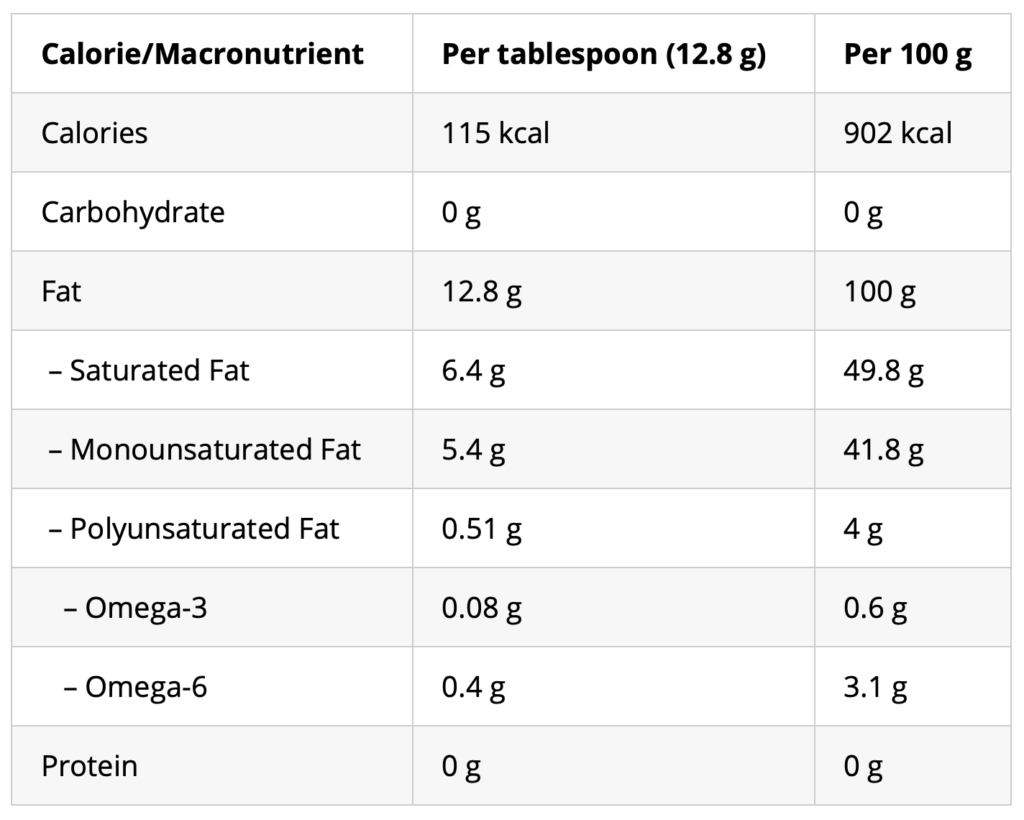
Grass-fed Beef Tallow Benefits
Tallow is worth using for the many reasons we’ve already discussed and a few we haven’t gotten to yet.
- Tallow is a stable cooking fat and does not spoil easily.
- Tallow is a dairy-free animal fat with a high smoke point making it ideal for searing meat and frying food.
- Tallow is versatile and can be used for many things: cooking, soap, candles, and skincare.
- Tallow is a healthy fat with important fat-soluble vitamins.
- Tallow can be sustainably produced.
- Tallow is affordable and budget-friendly.
Uses for Beef Tallow
Beef tallow has many uses in the kitchen and out. It is a very handy fat to have around.
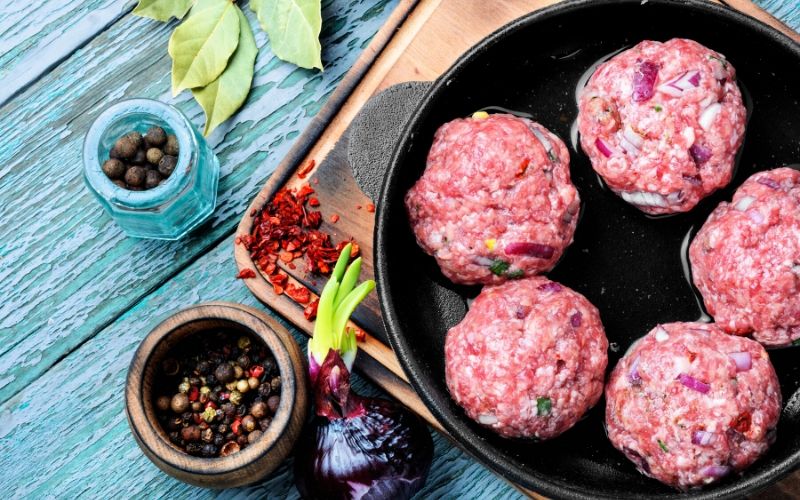
Cooking with Beef Tallow
Tallow has been in our kitchens for a long time. Only recently, with the rise of vegetable oils and misplaced fear of saturated fat, has tallow, and animal fats in general, received the cold shoulder.
Tallow has a smoke point around 400°F (200°C) and is excellent for high heat searing and frying. Fast food restaurants used to fry fresh fries with tallow because it remains very stable and imparted a good flavor.
Not only does beef tallow bring a delicious flavor, but it also makes flaky pateries, crispy fried vegetables, and succulent browned meat.
Dairy-free grass-fed tallow butter from White Oak Pastures is a great way to bring tallow back into your kitchen.

Tallow Candles
Some claim the Romans invented tallow candles in 500BC. Later, they became popular household items during the Middle Ages. Now tallow candles are a good alternative to petroleum-based candles.
Make your own Tallow Candles at home, it is a simple DIY craft you can make with non-toxic ingredients.
Dip tallow candles for a tapered look, use a silicon mold or set the wax in mason jars. They are great for everyday use or to store for emergencies.
If you don’t want to DIY buy these artisan-made tallow candles instead.
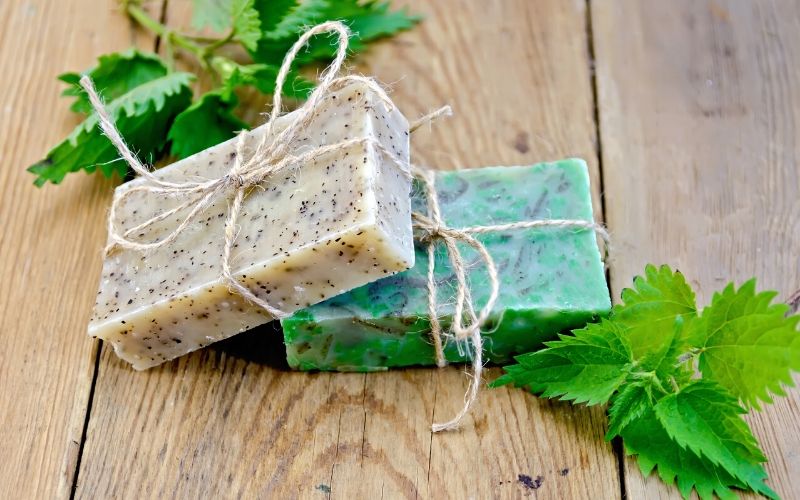
Tallow for Soap Making
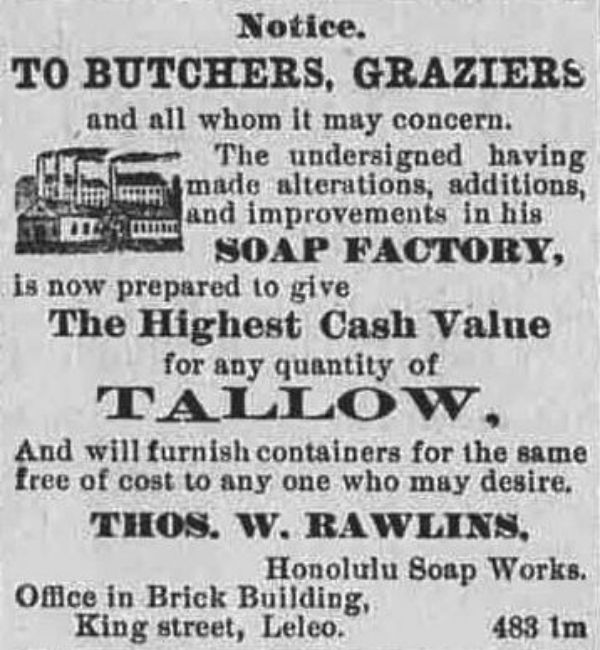
The tradition of making tallow soap goes back at least as far as Ancient Greece where legend says they accidentally made soap by inadvertently mixing ash and fat together.
Tallow is has a similar chemical composition to palm oil and will make a hard, long-lasting soap with a mild lather.
Try Cold Pressed Soap Making with Tallow or a Pure Tallow Soap and see how delightful it can be!
Before you get started, be sure to read over the information in Cold Process Soap Making 101 for beginner’s tips and safety protocols.
If you prefer to buy soap, check out the handcrafted tallow soaps I recommend.
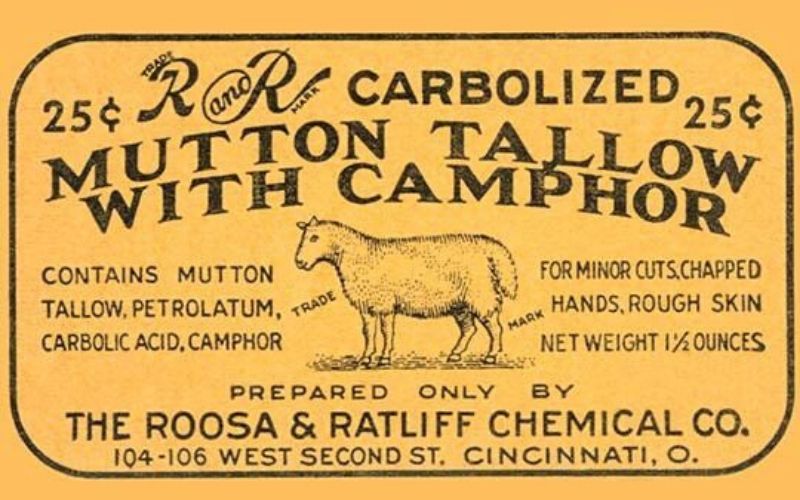
Tallow Skin Care
Tallow is 50% saturated fat and therefore highly compatible with our skin. Often called “bio-identical”, tallow balms, lotions, and moisturizers are deeply nourishing and easily absorbed at the cellular level.

Organic Tallow Skin Care
In addition to the fat soluble vitamins mentioned above, tallow also has important nutrients that specifically nourish our skin.
- Conjugated Linoleic Acid (CLA) – natural anti-inflammatory and anti-aging properties
- Palmitoleic acid (omega 7) – one of the skin’s basic building blocks
- Palmitic acid – improves the protective barrier function of skin
- Stearic acid – repairs damaged skin, and improves skin’s flexibility and suppleness
From where I’m looking, tallow is the best fat for skin care!
Try my easy tallow skin care recipes and see if they make a difference in your health.
Where to Buy Beef Tallow
As you search for quality food ask the food producers if they can also source tallow.
If you can’t find a local option, there are many places online to purchase from.
- US Wellness – offers small (1.7 pounds) and large (5 gallons) pails. They also stock raw suet.
- White Oak Pastures
- Epic Grass-Fed Beef Tallow
- Epic Pastured Bison Tallow
- Becky’s Tallow Treasure (ETSY)
Keto Beef Tallow Recipes
A keto diet is a high fat, low carb diet where saturated fats like butter, lard, and tallow are openly celebrated.
Tallow is a great cooking alternative to butter, coconut oil, or olive oil in many savory recipes.
For more recipe inspiration, browse my collection of Easy Keto Recipes.
I use tallow in these keto recipes:
- Pemmican
- Easy Cheeseburger Pie
- Mini Meat Pies (Hidden Liver)
- Easy Slow Cooker Keto Carnivore Beef Stew
- Organ Meat Pie
- Easy Braised Beef Shank
- Ground Beef and Broccoli Stir Fry
- Spinach Salmon Bugers
- Cheesy Broccoli Fritters
Beef Tallow on a Carnivore Diet
Eating beef tallow exclusively on a carnivore diet may prove troublesome for some people. Rendered fat digests differently than butter or olive oil. If you ever eat too much, you’ll know in the bathroom because it comes out the other end. Your body needs to create the right enzymes and increase bile production before it can properly digest the fat.
Since most of us are not accustomed to eating high amounts of rendered fat, slowly introducing tallow to the diet and increase intake over time.
Cooking in tallow is a great idea. If you want more added fat, use butter. ghee, lard, duck fat, egg yolk, or suet.
Are you wondering what to eat on a carnivore diet? Look no further than our Carnivore Diet Food List! It’s a free pdf you can print out at home or save on your device.
For a list of zero fiber recipes to cook in tallow browse through my collection of Carnivore Diet Recipes.
